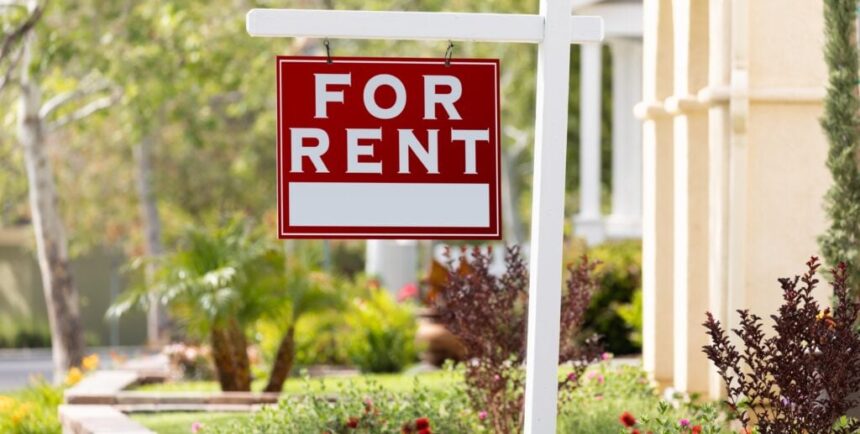Where do residential landlords stand as of the final quarter of 2023? Are there signs of a softening rental market, which would call for lower rents?
The answer, according to a recent rental market report from Redfin, will vary by region and the type of property you’re renting out. As ever, context is king, and we’ll dive a little deeper into what’s really going on with the rental market(s) in a moment.
That said, the overall trend is indeed toward a softer rental market—so much so that some landlords are now offering concessions to attract tenants.
Why is the Rental Market Softening?
As every investor in the country knows, we are still riding the tail end of an extraordinary few years that saw unprecedented rental price hikes during the pandemic. Many of these sky-high rent increases were fueled by COVID-era renter and homebuyer migration patterns toward destinations such as Austin, Texas; Phoenix; and other metro areas that were seen as affordable alternatives to traditionally attractive destinations in coastal areas.
Fast-forward to 2023, and the rental landscape has shifted. The COVID-era boom in demand has largely cooled off over the past year. That’s partially because renters’ priorities are now very different, with economic uncertainty and inflation as the dominant concerns. Renters are now facing multiple challenges, including the end of student loan relief and a cooling job market.
The other reason the rental market is softening is the increase in homebuilding, with Redfin reporting a 28.9% year-over-year increase in multiunit residential projects during the second quarter of 2023. There are simply more homes available to renters, which is taking some of the competitive edge off the market—renters aren’t quite feeling the availability squeeze in the same way as a couple of years ago.

Is all of this translating into huge drops in asking rent prices? Hardly. Nationwide, asking prices are still close to the record-high levels we were seeing last August. In fact, Redfin is reporting a tiny 0.1% decrease (meaning $2) from the August 2022 average of $2,054 per month to $2,052 per month in August 2023.
The Regional View: Southern Slump, Midwestern Success
If we zoom in a little more on what’s going on within regional rental markets, the situation is slightly more complex. The COVID-era rental hot spots in the South and West of the country are showing the most visible cooling trends.
In the second quarter, rents in the West have decreased the most, by 1.1% year over year. The South saw a more modest decline of 0.3%, but it’s still a more substantial decrease than the national average.

The Sun Belt cities that saw the highest rent increases during the COVID rental boom have passed their peak. We are unlikely to see the crazy spikes in rental prices of over 12% that we were seeing even a year ago. The West, according to Redfin, may be experiencing a decline partly due to “layoffs in the tech sector,” which accounts for a high proportion of jobs in West Coast metro areas.
On the other hand, some areas of the country are seeing healthy rental price growth. The Midwest is a case in point: The region saw 4.6% year-over-year rent increases in August.
This is partly because this region swerved the COVID-based rental market frenzy seen in the South. Now that affordability is at the forefront of renter thinking, this region, as well as the Northeast, is in a stronger position to attract renters and command higher asking prices. More reasonable baseline asking prices have translated into more stable growth over time.
So, What Should a Landlord Do Right Now?
What should landlords take away from these trends? First, and always: Know your regional market and what your target renter’s purchasing power is.
Second, take note of how landlords are currently coping with cooling rental market conditions. According to Redfin, they are increasingly offering one-off rental discounts instead of lowering rents per se. This means rents are effectively coming down in some areas, even though the declines don’t show up in asking-rent data.
There is wisdom in this approach. Offering tenants the first two or three months rent-free is a highly attractive proposition to renters, particularly in their current mindset of looking for more affordable housing. At the same time, this tactic allows landlords to lock in good long-term tenants who eventually will make up for the concession over the duration of their tenancies.
Finally, landlords in higher-end markets need to be especially watchful in the current climate. The luxury end of the rental market is feeling the impact of the softening conditions already. As Jon Ziglar, CEO at Rent.com, told Redfin:
“Higher-end properties are beginning to see pressure in certain markets as a significant portion of new units coming online are in the higher-end and luxury segment. We are still seeing a lot of competition for more affordable units due to less new supply, as well as increased pressure on consumer wallets, limiting the ability to stretch for that higher-level experience.”
If you are a landlord in the higher-end market, you may need to consider diversifying your portfolio to include more affordable properties. As a bare minimum, you should definitely consider the one-off concession tactic to make your property more attractive to tenants. Offering a higher-end property inclusive of utility bills and fully furnished can also increase its appeal.
Finally, landlords in areas that are seeing the fastest rental decreases will need to be vigilant, as they may need to adopt a more aggressive strategy that involves selling up a few months down the line.
Ready to succeed in real estate investing? Create a free BiggerPockets account to learn about investment strategies; ask questions and get answers from our community of +2 million members; connect with investor-friendly agents; and so much more.
Note By BiggerPockets: These are opinions written by the author and do not necessarily represent the opinions of BiggerPockets.









